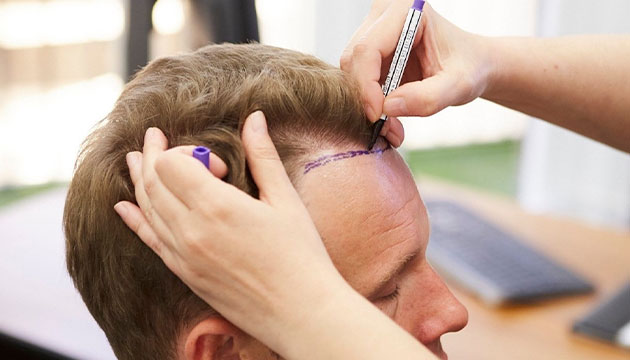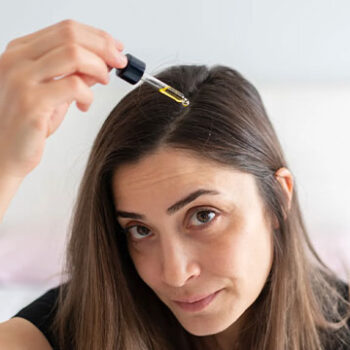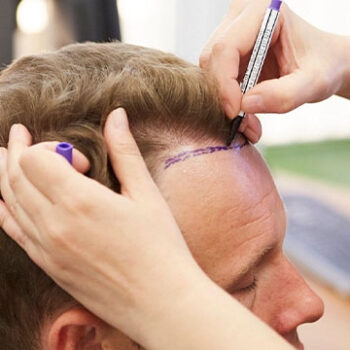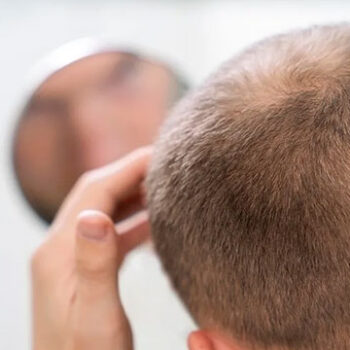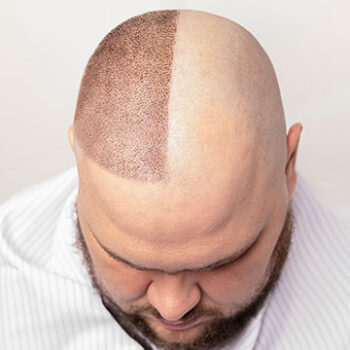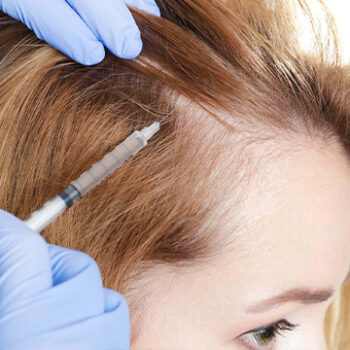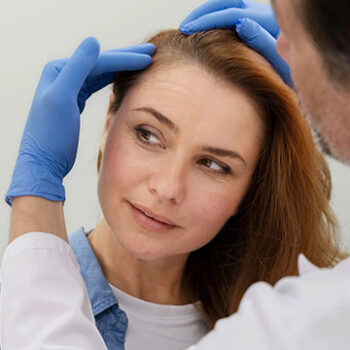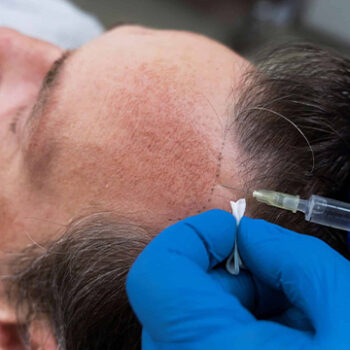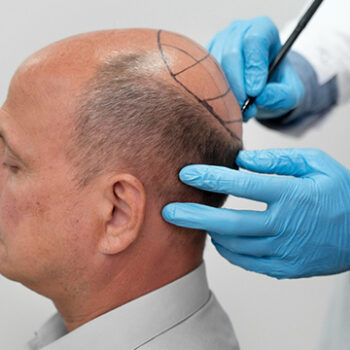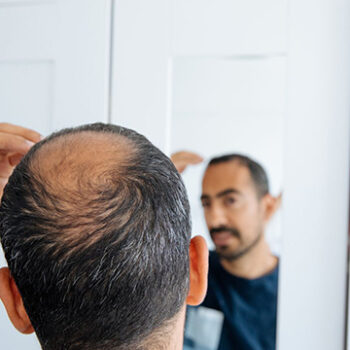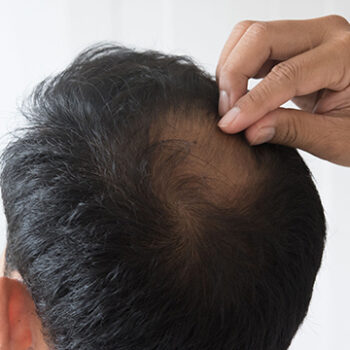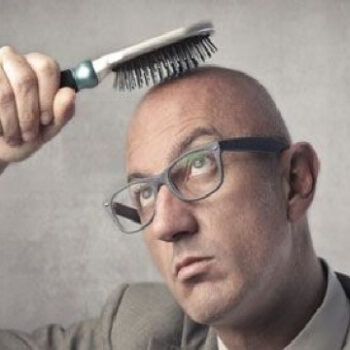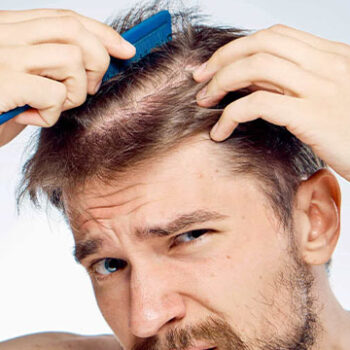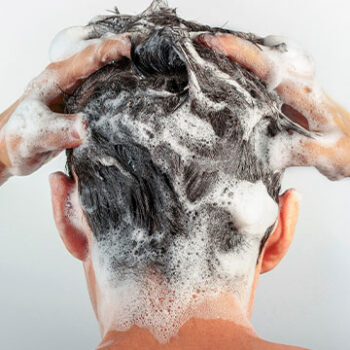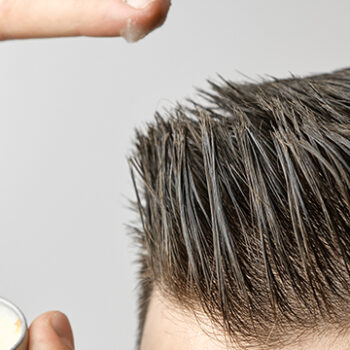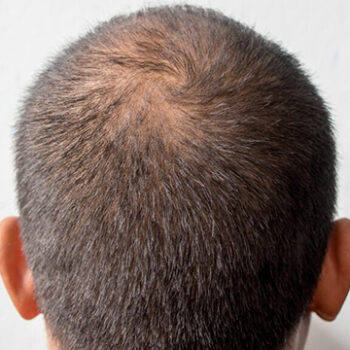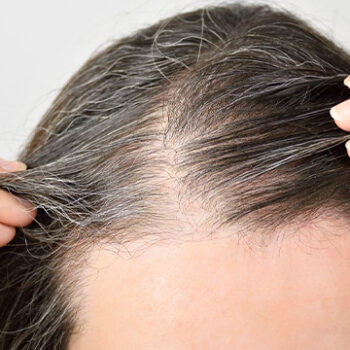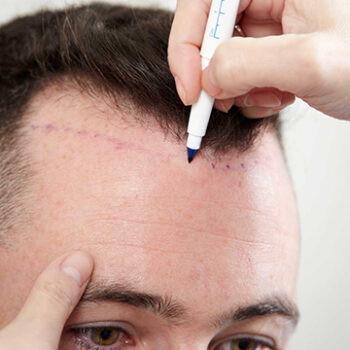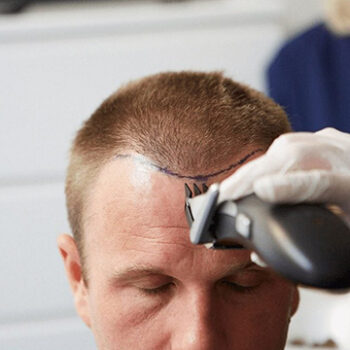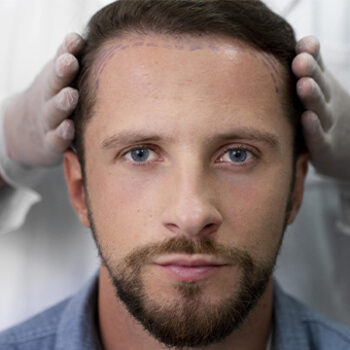Hairline recession and hair root weakening are among the most common concerns of modern men. This condition is not only an aesthetic problem but can also directly affect a person’s self-confidence and quality of life. Today, millions of men are trying to cope with this problem while seeking accurate information and effective solution methods. In this comprehensive guide, we will examine in detail why hairlines recede, the process of hair root weakening, and available treatment options.
Hairline Recession: Anatomical Process and Mechanism
Hairline recession is a visual change that occurs as a result of complex biological processes. This process begins with the structural change of hair follicles and follows a characteristic pattern over time.
Follicular miniaturization is the fundamental mechanism of this process. A normal hair follicle begins to shrink over time and the hair strands it produces gradually become thinner. This process is characterized by the follicle stopping terminal hair production and transitioning to vellus hair (fine, hair-like) production.
Shortening of the anagen phase is also a critical factor. While the anagen (growth) phase lasts 2-7 years in a normal hair cycle, this duration is dramatically shortened in affected follicles. As a result, hair remains shorter in length and cannot reach its full potential.
Hairline patterns are genetically predetermined. According to the Norwood-Hamilton classification, hairline recession typically begins in the temple areas and progresses forming an M shape. This process may not be symmetrical and can show individual differences.
The Effect of DHT Hormone on Hair Roots
Dihydrotestosterone (DHT) hormone is the most important trigger of hair loss and plays a central role in hair root weakening.
5-alpha-reductase enzyme catalyzes the conversion of testosterone to DHT. This enzyme is found in high concentrations especially in hair follicles. It has two forms, Type 1 and Type 2, and both play active roles in the hair loss process.
Androgen receptor binding determines the effect of DHT on hair follicles. DHT binds to androgen receptors in follicle cells, changing gene expression. This change leads to a reduction in follicle size and decreased hair production capacity.
Molecular signaling pathways are activated by the effect of DHT. Especially the Wnt/β-catenin signaling pathway is suppressed, and this condition reduces the proliferation of hair root cells. At the same time, TGF-β (Transforming Growth Factor-beta) activation increases and contributes to follicular inflammation.
Decreased blood flow occurs through the vasoconstrictive effect of DHT. Microcirculation to hair follicles is disrupted, and this condition negatively affects the transport of nutrients and oxygen.
Genetic Factors and Inheritance Models
Hairline recession and hair root weakening are largely genetically determined and follow complex inheritance patterns.
Polygenic inheritance is the basic characteristic of hair loss. Not a single gene, but the interaction of many genes determines this condition. The AR (Androgen Receptor) gene is located on the X chromosome and is inherited from the mother, but many other genes also play a role in this process.
Epigenetic factors can change gene expression without environmental influences. DNA methylation and histone modifications can affect the sensitivity of hair follicles to DHT. These mechanisms explain why different hair loss patterns can be seen even in individuals with the same genetic structure.
Maternal vs. paternal inheritance contains widespread misconceptions. In reality, hair loss genes can be inherited from both parents. While X-linked genes are inherited from the mother, autosomal genes can be inherited from both parents.
Penetrance and expressivity explain genetic variations. The severity of hair loss and age of onset can vary among individuals with the same gene variant. This condition is explained by the modulatory effect of environmental factors and other genes.
Hair Root Weakening Process and Stages
Hair root weakening follows a gradual process and goes through specific stages.
First stage: Microinflammation is the condition initially observed. With the effect of DHT, a mild inflammatory process begins around the hair follicle. At this stage, there is no visible hair loss yet, but follicle health begins to deteriorate.
Second stage: Follicle shrinkage becomes more pronounced. Follicle diameter decreases by 20-30% and the hair strands produced become thinner and begin to lose visibility. At this stage, a decrease in hair density is noticed.
Third stage: Terminal hair loss indicates reaching a critical threshold. The follicle stops producing terminal hair and only produces vellus hair (fine hairs). These hairs have a very short life cycle and are practically invisible.
Final stage: Follicle atrophy means irreversible damage. The follicle completely loses its function and turns into sclerotic tissue. At this stage, traditional treatment methods are ineffective and only surgical options remain.
Effects of Lifestyle Factors on Hair Roots
Modern lifestyle includes factors that directly affect the health of hair roots.
Chronic stress disrupts the hair cycle by increasing cortisol levels. High cortisol triggers apoptosis (programmed cell death) in hair follicles and causes early transition to the telogen phase. This condition leads to widespread hair loss called telogen effluvium.
Nutritional habits directly affect the metabolic needs of hair roots. Protein deficiency disrupts keratin synthesis, which is the building block of hair strands. Iron deficiency reduces oxygen transport in hair follicles and impairs follicle functions.
Sleep quality is directly related to growth hormone secretion. Insufficient sleep disrupts cell regeneration and negatively affects the repair mechanisms of hair follicles. Growth hormone released during REM sleep is critical for the proliferation of follicle cells.
Smoking disrupts microcirculation and reduces blood flow to hair follicles. Nicotine has a vasoconstrictive effect and leads to follicular hypoxia. Additionally, toxic substances in cigarettes increase oxidative stress and accelerate follicle damage.
Early Diagnosis Methods and Evaluation Criteria
Early detection of hairline recession and hair root weakening is critically important for effective treatment.
Photographic documentation provides objective evaluation. Photos taken from the same angles under standard lighting conditions are the gold standard for tracking progression. Especially frontal, lateral, and vertex (crown) views should be recorded.
Dermoscopy examination provides microscopic imaging of the scalp and follicles. With this method, follicle density, hair diameter variations, and scalp health can be evaluated. Perifollicular erythema and follicle diameter measurements are valuable for diagnosis.
Hair pull test helps determine active hair loss periods. This test performed on 50-60 hair strands is considered positive when more than 6 hairs come out and indicates the presence of active telogen effluvium.
Trichoscopy (Video Dermoscopy) offers more detailed analysis opportunities. Hair diameter measurements, follicle density calculations, and scalp vascularization can be evaluated. This method is also used in objective follow-up of treatment response.
Role of Nutrition and Vitamin Deficiencies
Specific nutrients and vitamins are required for optimal hair health.
Proteins and amino acids form the foundation of hair structure. Especially cysteine, methionine, and lysine amino acids are critical for keratin synthesis. 20% of daily protein needs are used for hair production.
Iron deficiency is an important factor in men as well as women. When ferritin levels are below 40 ng/mL, the hair cycle can be disrupted. Heme iron (meat, fish) is better absorbed than non-heme iron (plant sources).
B vitamin complex especially B12, folate, and biotin are essential for hair health. B12 deficiency can lead to megaloblastic anemia and hair loss. Biotin deficiency causes keratinization disorders.
Vitamin D has been better understood in recent years for its role in hair health. Vitamin D receptors are found in hair follicles and regulate the follicle cycle. Its deficiency has been associated with alopecia areata.
Zinc is found in high concentrations in hair follicles and is necessary for protein synthesis. Zinc deficiency causes hair strands to thin and break.
Treatment Options and Approach Strategies
Various treatment options are available for hairline recession and hair root weakening.
Medical treatments are most effective in the early stages of the process. Finasteride and dutasteride block the 5-alpha-reductase enzyme, reducing DHT production. These medications can stop hair loss by 80-90% and provide regrowth by 60-70%.
Topical treatments offer a lower side effect profile. Minoxidil in 2% or 5% concentrations increases blood flow to hair follicles and stimulates growth factors. Topical formulations containing azelaic acid, caffeine, and adenosine also show supportive effects.
Platelet Rich Plasma (PRP) is an application of regenerative medicine. Platelets obtained from the patient’s own blood support follicle regeneration by releasing growth factors. It is applied 3-6 sessions once a month.
Mesotherapeutic injections involve direct application of vitamins, minerals, and growth factors to the scalp. Especially vitamin complexes, hyaluronic acid, and peptides are used.
Advanced Treatment Methods and Technologies
Modern medicine offers innovative methods in hair loss treatment.
Microneedling stimulates the release of growth factors by creating controlled microtrauma in the scalp. Needle depths of 0.5-1.5 mm are used and increase the penetration of topical treatments.
Laser therapy (LLLT) increases cellular metabolism with low-intensity laser light. Light at wavelengths of 660-670 nm stimulates mitochondrial activity and increases ATP production.
Hair transplant techniques offer surgical options in advanced cases. FUE (Follicular Unit Extraction) and FUT (Follicular Unit Transplantation) methods perform follicle transfer from donor area to recipient area.
Stem cell therapies are experimental approaches that show promise for the future. Follicle regeneration is targeted using adipose-derived stem cells or follicular stem cells.
Preventive Strategies and Lifestyle Recommendations
A proactive approach plays a critical role in preventing hair loss.
Early intervention gives the best results. Protective treatments can be started in individuals with family history in their 20s. This approach minimizes follicle damage.
Stress management keeps cortisol levels under control. Meditation, yoga, regular exercise, and hobby activities show stress-reducing effects.
Proper hair care prevents mechanical damage. Using mild shampoos, avoiding hot water use, and staying away from harsh combing behaviors are important.
Regular check-ups monitor disease progression and optimize treatment plans. Dermatology specialist control every 3-6 months is recommended.
Psychological Impact and Quality of Life
The psychological effects of hair loss should not be underestimated.
Loss of self-confidence is the most common psychological consequence. Social withdrawal, depression, and anxiety disorders can develop. In this case, psychological support and counseling are important.
Social functionality can be affected. Work life, romantic relationships, and social activities can be negatively affected. Early treatment minimizes these effects.
Developing adaptation strategies is important. Options such as changing hairstyle, wearing hats, or hair transplantation can be considered.
Future Perspectives and Research Developments
Scientific research continues to explore new treatment possibilities.
Gene therapy approaches aim to modify the expression of genes responsible for hair loss. CRISPR-Cas9 technology may offer possibilities to edit genes that cause DHT sensitivity in the future.
Tissue engineering focuses on creating new hair follicles in laboratory environments. 3D bioprinting and scaffold technologies are being developed to regenerate follicular structures.
Novel pharmaceutical targets are being investigated for more effective treatments. JAK inhibitors, prostaglandin analogs, and Wnt pathway modulators show promising results in clinical trials.
Personalized medicine approaches aim to tailor treatments based on individual genetic profiles. Pharmacogenomic testing may help predict treatment responses and optimize therapy selection.
Cost-Effectiveness and Treatment Selection
Understanding the economic aspects of different treatment options helps in making informed decisions.
Long-term cost analysis shows that early medical intervention is often more cost-effective than advanced surgical procedures. Monthly medication costs may be significantly lower than hair transplant expenses over time.
Insurance coverage varies for different treatments. Most medical treatments for hair loss are considered cosmetic and may not be covered by insurance plans.
Treatment timeline expectations should be realistic. Most medical treatments require 6-12 months to show visible results, and continuous use is necessary to maintain benefits.
Conclusion
Hairline recession and hair root weakening is a complex process that requires a multidisciplinary approach. With early diagnosis and appropriate treatment selection, this condition can be controlled and quality of life preserved. Although genetic factors cannot be changed, significant improvements can be achieved with lifestyle modifications and modern treatment methods. Each individual needs a personalized treatment plan, and expert evaluation is indispensable in this process. In light of technological developments and research, it is anticipated that more effective treatment options will be available in the future. The key to success lies in early recognition, prompt intervention, and consistent adherence to treatment protocols under professional guidance.

 English
English Français
Français Deutsch
Deutsch Türkçe
Türkçe 中國人
中國人